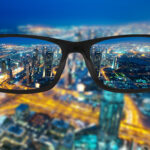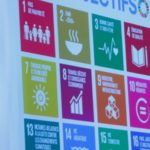ABSTRACT
Surging sexual violence is threatening Nepal’s women. Research illustrates that the country’s traditional justice system frequently fails to address survivors’ holistic needs due to corruption, insufficient state capacities, and by restricting its forces to punishing the responsible party. An approach that mainly focuses on penalty is just a quick-fix solution, neglecting risks for recurring offenses following prison release or payment of fines. While raising awareness and teaching about sexual violence are crucial elements of a response to the threat, rethinking justice and finding ways to achieve it individually are now needed.
Restorative justice, an alternative to sanction-centered systems, puts survivors in the focus. The approach and mindset can serve as a platform for reflection, inner growth, and healing while contributing to preventing future incidents. Restorative procedures have proven their potential in Nepal during its ongoing transition course to a federal democratic state after the end of a decade-long civil war. Unfortunately, awareness of alternatives justice mechanisms remains low and requires additional attention from NGOs, the Government of Nepal, and the international community, such as the UN, the EU, and SAARC.
Through his Ph.D. dissertation, Tobias Volz assessed the awareness of sexual violence and restorative justice in Nepal through a random sample. He interviewed Nepali sexual violence survivors and experts to dig into current procedures and analyze the potential of restorative justice in this setting. This article provides insights into the findings and serves as an appeal to intergovernmental organizations to help Nepal’s sexual violence survivors through their journey to justice.
INTRODUCTION
A flood of shocking sexual offenses brought national attention to Nepal’s gender-based violence and dissatisfactory justice mechanisms. Sexual violence happens in various settings and affects all populations, including lower, middle, and high-income families. It occurs at school or university, at the workplace, in the neighborhood, but most commonly in the domestic setting. During the COVID-19 lockdown and curfew situation in 2020 and 2021, domestic sexual violence further spiked drastically.[1]In urban environments, the issue often comes out more frequently than in rural Nepal.[2]
Nepal is considered an extremely patriarchal society, and women are worse off than men in almost every measure.[3] The majority of those falling under the poverty line are women and girls, bringing Bhadra and Thapa Shah to conclude that poverty has a woman’s face. Additionally, a visible disparity between the genders in the health and educational situation exists.[4] One reason for inequality is that thirty-seven percent of girls marry before the legal age of 18, the third-highest child marriage rate in Asia. [5]
The NGOs Equality Now and Women for Human Rights state that the number of reported rape cases per fiscal year doubled from 2014-2015 to 2018-2019.[6] Lekhanath Pandey describes that public sexual violence cases are only the iceberg tip of a growing rape pandemic.[7] The Special Rapporteur on violence against women, Dubravka Simonovic, during an official visit to Nepal in 2019, noticed the worryingly common occurrence of sexual violence, rooted in patriarchal mindsets.[8]
Recent reforms of the legal system, such as adopting the new constitution and implementing laws to protect everyone from sexual violence, were needed steps. Nevertheless, a core challenge is now their implementation on the federal, provincial, and local levels. Nepal’s criminal justice responses are still characterized by victim-blaming, low conviction rates, inequality in law enforcement, and lack of support services. Corruption and incompetence often contribute to prolonging cases for years.
Studies, such as by Anti-Slavery International, have proven that a more survivor-centered review into the sense of justice provides a deeper understanding of ways to access it. Additionally, survivors of violence shared their demand for justice beyond punishment, including acknowledgment, healing, prevention of future crimes, and financial recompensation.[9]
Existing research into the needs of Nepal’s sexual violence survivors with a focus on justice is limited. As a part of his Ph.D. studies, Tobias Volz interviewed 15 Nepali sexual violence survivors, activists, restorative justice practitioners, and community members. Additionally, he conducted a quantitative survey to create a snapshot of how people in Nepal and internationally perceive the challenge of sexual violence against women in the country. The survey gathered 154 responses.
The study aimed to assess the general awareness of the challenges women affected by sexual violence in Nepal face, better understand survivors’ needs, and look into the potential and limitations of restorative justice in cases of sexual violence. Selected insights of the study are highlighted in the following.
SEXUAL VIOLENCE IN NEPAL
The South Asian country Nepal, home to almost 30 million people, is yet recovering from its civil war that only ended in 2006. The country still struggles with bringing justice to those affected by war crimes, especially war-related sexual violence. Government attention is often drawn away by other urgent crises, such as poverty, the 2015 earthquake, political instability, and the COVID-19 pandemic, leaving too little capacities towards helping sexual violence survivors.[10] UNFPA writes that gender-based violence commonly spikes up in humanitarian settings and times of crisis, which is also the case in Nepal.[11]
A more and more common and concerning issue is online sexual violence. One interviewee shared the case of a girl who studied in the ninth grade of a public school. A classmate started to push her into unwanted sexual intercourse. However, cultural taboos and lacking self-confidence stopped her from screaming or defending herself, even when the classmate took photos of her intimate parts, which he then used to blackmail her. He threatened her to share the pictures on social media if she refused to have further sex with him.[12]
MORE SEXUAL VIOLENCE AWARENESS NEEDED
Karin Heisecke highlights the relevance of transforming attitudes and behaviors that often result from gender stereotypes and gender-biased traditions.[13] Victim-blaming, a label to examine shared responsibility for wrongdoings, is common in Nepal.[14] One survivor shared how her power was taken away when she and her classmate reported a teacher who frequently sexually harassed girls in class by touching them inappropriately. Once they tried to speak up, the school questioned their credibility due to their years-long silence. Unfortunately, it took and still takes many affected women and girls years to understand what they experienced. [15]
In Volz’s survey, 31 percent of participants had a somewhat high, 20 percent a medium, 13 percent a somewhat low, and 10 percent a very high awareness level. High awareness was the least common case. While a relatively high percentage of participants stated that they have a somewhat high or medium awareness level, 26 percent of participants claimed to have very low awareness of the issue. These results indicate that more awareness-raising efforts might be needed.[16]
Activists envision a Nepal where sex and sexuality are not taboo, and talking about it is normal and accepted in society. Access to information on sexual violence and services for survivors such as support groups are critical components to help women recognize sexual violence. Comprehensive sexuality education in schools needs to start as early as possible to stop violence in its roots and avoid possible discrimination processes.
While creating more awareness of sexual violence against women as a part of a prevention strategy is crucial, one should not assume that more understanding alone is the key to stopping the threat. Since the situation of survivors is often complex, an innovative and holistic concept is needed.
According to Zehr and Gohar, restorative justice is a holistic approach, not only a practice but also a theory. While there is no generally accepted definition, the concept aims to create a real sense of justice by taking the survivors to the center and designing a participatory process that considers their needs and puts things as right as possible.
Restorative procedures seek to create accountability by identifying the root causes of the wrongdoing and help the offending party understand its consequences for the survivor.[17] It is imperative to ensure skilled and professional approaches, safety needs to be guaranteed, and re-victimization needs to be prevented.
THE NEED OF GETTING JUSTICE
A Nepali sexual violence survivor shared:
I have experienced sexual violence myself. When you go through this sort of incident in life, you will go through lots of mental, emotional, and physical breakdowns. You will start having trust issues. You will lose your confidence. You will fear so many things in life. When you go through that specific incident, it is not always that easy, as we say.[18]
As illustrated in the quote, the consequences of sexual violence are often severe and shattering, creating layers of needs within survivors. One of the first responses when asking about survivors’ needs is the necessity of getting justice. Interviewed women claimed that justice is subjective and individual in each case, defining justice for oneself a unique challenge.
While justice ideas differ individually, aspects include financial compensation, livelihood, punishment of the harming party, acknowledgment, apologies, access to free and good-quality psych-social services, therapy, and medical treatment. Issues such as police corruption, lacking capacities, bureaucracy, discrimination, and lacking financial resources block access to justice.
Women who survived sexual violence should, in a supported process, be enabled to determine factors that need to be addressed for them to get to the point of justice. Procedures serving to define justice for oneself are multi-faceted and require the willingness to engage in the needed inner work. Conversations with survivors can kick-start reflection and lead to internal understanding, both crucial to realize one’s needs.
Mental health, a core need of survivors, is still a neglected issue in many low- or lower-middle-income countries, such as Nepal. Therefore, various activists are active in bringing attention to the long-lasting trauma of survivors. Zehr and Gohar highlight the potential of restorative justice to facilitate inner peace and healing since survivors cannot always process emotions organically. In many cases, restorative justice can help to heal inner wounds. [19]
Multiple interviewed survivors described that getting justice and healing can also mean learning to forgive the harming party, such as through mediation, restorative justice in action. Hearing survivors out and providing them space to speak to those responsible can have empowering effects and help to cope with the experiences. Dialogues are not limited to in-person or shuttle mediation but can also include innovative online elements, such as text message chats, phone or video calls.
In many cases, survivors want to be sure that harming parties are not repeating their wrongdoings, which creates the need to also look into the reintegration of those responsible. In some cases, they have been affected by forms of violence themselves. Psychosocial support, therefore, also needs to be accessible for everyone involved, a fundamental thought of restorative justice.
RESTORATIVE JUSTICE IN NEPAL
Interviews with Nepali restorative justice practitioners provided additional insights beyond what is currently accessible through literature review. The restorative justice movement started growing in Nepal after 2012 in post-conflict stabilization, acknowledgment, and recompensation of conflict-affected individuals.
Today, restorative justice support programs for sexual violence survivors in Nepal exist in different forms. Projects are diverse and include art, poetry, cartoons, story-telling sessions, support groups, and other workshop forms. Often, professionals working restoratively are either unaware of it or call it differently, for example, due to fundraising purposes.
The survey revealed that approximately 50 percent of participants never heard about restorative justice, 34 percent have heard about it, and 12 percent do not remember. Lacking awareness on the concept is one reason for funding issues that those working in the field face. Practitioners shared that including the term restorative justice in project titles in Nepal can, for example, cause issues when getting the activities approved by the Government of Nepal or lead to doubts of donors. Finding international funding is a challenge for many NGOs working in restorative justice.
While government entities supposed to work based on restorative principles are often criticized due to high-level corruption, most interviewees seemed optimistic about the Government of Nepal’s willingness to support restorative justice initiatives in sexual violence cases.[20]
CONCLUSION AND RECOMMENDATIONS: AN APPEAL TO SCALE-UP RESTORATIVE JUSTICE
Tackling sexual violence requires thinking out of the box. New approaches are needed to create awareness and safe spaces for women. Disaster, conflicts, tensions, and the current COVID-19 pandemic worsen the prevalence of sexual violence cases, kick-starting movements, protests, and advocacy initiatives against sexual violence.
The needs of survivors are diverse and include
- Trustworthy, survivor-centric, sensitive, and competent police and government support while obtaining acknowledgment by law;
- Livelihood support, income-generation, and financial recompensation to restore survivors’ lives;
- High-quality, judgment- and stigma-free, accessible, and affordable mental health services;
- Facilitated dialogues through need-based means;
- Awareness and more access to information as well as age-appropriate and gender-informed comprehensive sexuality education in different settings; and
- Preventing reoccurring sexual violence through the reintegration of the harming party.
Applying restorative justice in sexual violence cases more effectively and on a larger scale is a process that necessitates cooperation between Nepal’s government, the civil society international stakeholders. The following points illustrate the needed engagement for Nepal’s UN system, primarily UN entities such as UN Women, UNFPA, UN OHCHR, UNODC, UNICEF, UNESCO, and other intergovernmental organizations active in Nepal like the EU.
- Restorative justice awareness: Leading and supporting awareness campaigns about restorative justice in Nepal through social media and high-level advocacy. Additionally, the restorative justice capacities of government officials, police officers, civil society actors, and restorative justice practitioners, such as social workers, need to be strengthened through training and technical support.
- Provide funding: Ensure direct funding of restorative justice activities, support government entities to allocate budget, or advocate internationally for sufficient funding for restorative justice services for sexual violence survivors in Nepal.
- Support innovation: Innovation plays a crucial role and can be applied by utilizing online tools such as social media platforms, including those famous in Nepal like Facebook, Instagram, and TikTok.
- High-level advocacy: Through advocacy targeting Nepal’s government, the UN can support related ministries in creating the legal framework needed for restorative justice in action.
- More education: UN agencies, such as UNFPA, UNESCO, UNICEF, and UN Women, and the EU need to invest in and advocate for comprehensive sexuality education and the restorative justice idea for all groups, including schools, adolescents, and all other groups, to prevent sexual violence and help survivors recognize possible threats.
Nepal progressed significantly within the last decade in terms such as literacy and education, which gives reason to hope that the situation of women will slowly improve regarding sexual violence. Positive experiences in applying restorative justice must be utilized for advocacy, build upon, and further research. While the road to a better situation for Nepal’s women might still be long, focusing on helping every person who is or might be affected is undoubtedly worth all the efforts.
REFERENCES
- Luna K.C., “Conflict, Disaster and Changing Gender Roles in Nepal: Women’s Everyday Experiences” (PhD diss., Graduate School Wageningen, 2019), accessed January 9, 2020, https://edepot.wur.nl/466013.
- Chandra Bhadra and Mani Thapa Shah, NEPAL: Country Gender Profile (Kathmandu, Nepal, 2007), accessed January 22, 2021, https://www.jica.go.jp/english/our_work/thematic_issues/gender/background/pdf/e07nep.pdf.
- Shiva Bhandari et al., “General Health Status of Women of Reproductive Age in Nepal.,” Journal of Nepal Health Research Council 12 (January 1, 2014): 8–13.
- Malcolm Langford and Ananda Bhattarai, Constitutional Rights and Social Exclusion in Nepal, SSRN Scholarly Paper (Rochester, NY: Social Science Research Network, March 6, 2012), accessed December 7, 2020, https://papers.ssrn.com/abstract=2016818.
- Equality Now and Women for Human Rights, “Sexual Violence in Nepal: Legal and Other Barriers to Justice for Survivors,” 2021, accessed May 27, 2021, https://d3n8a8pro7vhmx.cloudfront.net/equalitynow/pages/3591/attachments/original/1618940267/EN-SA_-_country_fact_sheets_-_NEPAL_ENGLISH.pdf?1618940267.
- Lekhanath Pandey, “Surge in Nepal Rape Cases Triggers Death Penalty Discussion,” Deutsche Welle (Kathmandu, Nepal, 2020), accessed December 22, 2020, https://p.dw.com/p/3jomB.
- Human Rights Council, “Visit to Nepal: Report of the Special Rapporteur on Violence Against Women, Its Causes and Consequences,” 2019, https://www.ohchr.org/EN/HRBodies/HRC/RegularSessions/Session41/Documents/A_HRC_41_42_Add_2_EN.docx.
- The Himalayan Times, “Rise in GBV, Sexual Abuse Cases Feared,” The Himalayan Times, April 1, 2020, accessed December 29, 2020, https://thehimalayantimes.com/nepal/rise-in-gbv-sexual-abuse-cases-feared/.
- Anti-Slavery International, Reaching out for Justice: Overcoming Barriers for Child Survivors of Sexual Exploitation and Trafficking Accessing Injustice in Nepal, Study (London, UK, 2020), accessed December 22, 2020, https://www.antislavery.org/wp-content/uploads/2020/09/ASI_Nepal_CSE_Justice_Report.pdf.
- Leo E. Rose et al., “Nepal,” 2020, accessed June 12, 2020, https://www.britannica.com/place/Nepal/Climate.
- UNFPA, “Gender-Based Violence in Humanitarian Settings,” 2014, accessed March 23, 2021, /resources/gender-based-violence-humanitarian-settings.
- Interview Participant 10.
- Karin Heisecke, Raising Awareness of Violence Against Women: Article 13 of the Istanbul Convention (Straßbourg: Council of Europe, 2014), accessed January 27, 2021, https://rm.coe.int/168046e1f1.
- Laura J. Moriarty, Controversies in Victimology (Routledge, 2008).
- Interview Participant 14.
- Tobias Volz, “Restorative Justice in Nepal: An Analysis of the Approach in Cases of Sexual Violence Against Women” (PhD diss., EUCLID, 2021).
- Howard Zehr and Ali Gohar, The Little Book of Restorative Justice (Peshawar: Uni-Graphics, 2003), 14-40.
- Interview Participant 6.
- Zehr and Gohar.
Publisher information: The Intergovernmental Research and Policy Journal (IRPJ) is a unique interdisciplinary peer-reviewed and open access Journal. It operates under the authority of the only global and treaty-based intergovernmental university in the world (EUCLID), with other intergovernmental organizations in mind. Currently, there are more than 17,000 universities globally, but less than 15 are multilateral institutions, EUCLID, as IRPJ’s sponsor, is the only global and multi-disciplinary UN-registered treaty-based institution.
IRPJ authors can be assured that their research will be widely visible on account of the trusted Internet visibility of its “.int” domain which virtually guarantees first page results on matching keywords (.int domains are only assigned by IANA to vetted treaty-based organizations and are recognized as trusted authorities by search engines). In addition to its “.int” domain, IRPJ is published under an approved ISSN for intergovernmental organizations (“international publisher”) status (also used by United Nations, World Bank, European Space Agency, etc.).
IRPJ offers:
- United Nations Treaty reference on your published article (PDF).
- “Efficiency” driven and “author-focused” workflow
- Operates the very novel author-centric metric of “Journal Efficiency Factor”
- Minimal processing fee with the possibility of waiver
- Dedicated editors to work with graduate and doctoral students
- Continuous publication i.e., publication of articles immediately upon acceptance
- The expected time frame from submission to publication is up to 40 calendar days
- Broad thematic categories
- Every published article will receive a DOI from Crossref and is archived by CLOCKSS.






